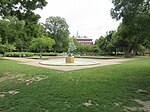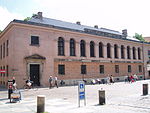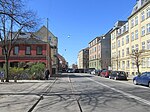Assistens Cemetery (Danish: Assistens Kirkegård) in Copenhagen, Denmark, is the burial site of many Danish notables as well as an important greenspace in the Nørrebro district. Inaugurated in 1760, it was originally a burial site for the poor laid out to relieve the crowded graveyards inside the walled city, but during the Golden Age in the first half of the 19th century it became fashionable and many leading figures of the epoch, such as Hans Christian Andersen, Søren Kierkegaard, Christoffer Wilhelm Eckersberg, and Christen Købke are all buried here.
Late in the 19th century, as Assistens Cemetery had itself become crowded, a number of new cemeteries were established around Copenhagen, including Vestre Cemetery, but through the 20th century, it continued to attract notable people. Among the latter are the Nobel Prize-winning physicist Niels Bohr and a number of American jazz musicians who settled in Copenhagen during the 1950s and 1960s, including Ben Webster and Kenny Drew.
An assistenskirkegård (meaning "assistance cemetery") is originally a generic term in Danish, used to refer to cemeteries which were laid out to assist existing burial sites, usually those located in urban settings in connection with churches, and therefore a number of cemeteries by the same name are found around Denmark.
The cemetery is one of five run by Copenhagen Municipality; the other cemeteries are Vestre Cemetery, Brønshøj Cemetery, Sundby Cemetery, and Bispebjerg Cemetery.












